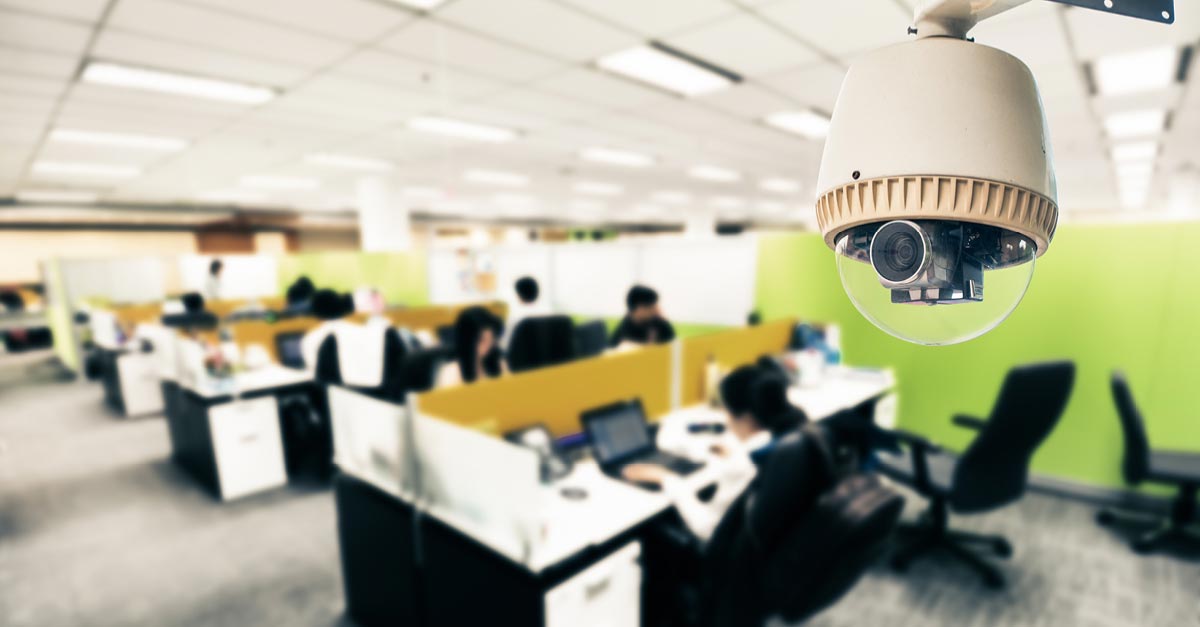For WorldatWork Members
- Take These Three Steps to Mitigate Employee Distrust, Workspan Daily Plus+ article
- The Trust Equation: Building Trust Through Total Rewards, Workspan Daily Plus+ article
- Aligning Incentives, Performance Metrics and Strategic Objectives, Workspan Magazine article
- Freedom and Responsibility, Workspan Magazine article
For Everyone Else
- Employee Trust Is a Problem (that TR Pros Can Help Address), Workspan Daily article
- Building Employee Trust Amid Layoffs, Workspan Daily article
- Improve Performance Management with Frequent Communication and Transparency, Workspan Daily article
Employees facing the constant scrutiny of workplace surveillance are fed up with all the oversight, according to a recent Workplace Monitoring Report by Zety, a career-builder website.
The survey of 1,000 U.S. workers found that 1 in 9 respondents had quit a job due to excessive monitoring, and 90% of all participants shared strict reporting negatively affects the workplace, leading to burnout (18%), job dissatisfaction (22%) and a culture of fear (22%).
Access a bonus Workspan Daily Plus+ article on this subject:
Extreme monitoring tactics, such as keystroke tracking, webcam surveillance and excessive screen monitoring, can often heighten stress and undermine psychological safety, said Jasmine Escalera, a career expert at Zety.
She noted when such tactics are “driven by the belief that employees aren’t working ‘hard enough,’ it fosters disengagement rather than motivation.”
Additionally, organizations could be sacrificing far more than they may realize in exchange for their efforts to increase productivity through surveillance.
“Excessive monitoring can lead to feelings of micromanagement, decreased morale and lower job satisfaction, ultimately resulting in reduced productivity and potential talent loss,” Escalera said.
If that is the case, is workplace surveillance the best way to monitor and track workforce job performance?
How Monitoring Occurs
The effects of digital surveillance on worker productivity also have been studied by government entities, including the U.S. Government Accountability Office (GAO), an independent, nonpartisan agency within the legislative branch that provides auditing, evaluative and investigative services for Congress.
In 2024, the GAO released a report summarizing public comments submitted to the White House Office of Science and Technology Policy’s request for information regarding use of automated digital surveillance tools to monitor workers and the effects of such surveillance.
The report found employers utilized an array of digital surveillance tools to monitor workers, including:
- Cameras and microphones
- Video and audio monitoring
- Computer monitoring software to monitor keystrokes, mouse movements, eye movements, texts and screenshots
- Geolocation software installed on personal phones to track daily movements
- Tracking applications to monitor start and end times for work, body movements, speed of work and activities
- Electronic sensors embedded in wearable devices to track body movements and biometric health data such as heart rate and blood pressure
Some respondents stated digital surveillance can reduce productivity, while others said surveillance can improve it.
For example, workers may take on insignificant or meaningless tasks to appear productive or just jiggle a keyboard mouse so it gets registered by the monitoring software, said Thomas Costa, the GAO director of education, workforce and income security. Yet, respondents also felt surveillance can improve productivity because “it allows employers to identify and provide targeted coaching and other support to workers.”
A Call for Transparency
Given the widespread use of surveillance in the workplace, Costa said he was not surprised to see the lack of employer transparency in the GAO report. For example, workers reported that employers sometimes require them to download digital surveillance tools, such as tracking apps, on their personal devices but are not transparent about what information these tools collect or how they are using the information.
The importance of transparency also appeared in the Zety report, with 72% of employees stating workplace monitoring should be openly communicated.
“Employers risk damaging their reputation if monitoring is perceived as secretive or invasive,” Escalera said. “Any company considering monitoring must ensure respect for employee autonomy, maintain a healthy workplace culture and be transparent about how these practices support employees while prioritizing trust.”
To Watch or Not to Watch?
When it comes to implementing a surveillance program, organizations should first consider how broad and deep they want to go with their efforts, said Mark Royal, a senior corporate partner at Korn Ferry.
“There are layers to monitoring,” he said. “There’s just more risk the more excessive the surveillance is — either with negative backlash or stress that employees will feel that their every move will be monitored.”
Another thing to consider, Royal said, is the alienation some employees may feel when they must navigate an onerous monitoring program meant to capture low-performing workers.
“You don’t want to try and deal with the exception — that employees are taking advantage of the flexibility they have — and undermine the motivation, commitment and focus that some of your highest-performing employees have,” he explained.
Royal suggested instead of intrusive tactics like excessive productivity reporting, employers should focus on fostering ongoing, open conversations about expectations and performance goals.
Escalera agreed, stating, “A culture built on trust and support, rather than surveillance, is the best way to enhance productivity and employee retention.”
Editor’s Note: Additional Content
For more information and resources related to this article, see the pages below, which offer quick access to all WorldatWork content on these topics:







